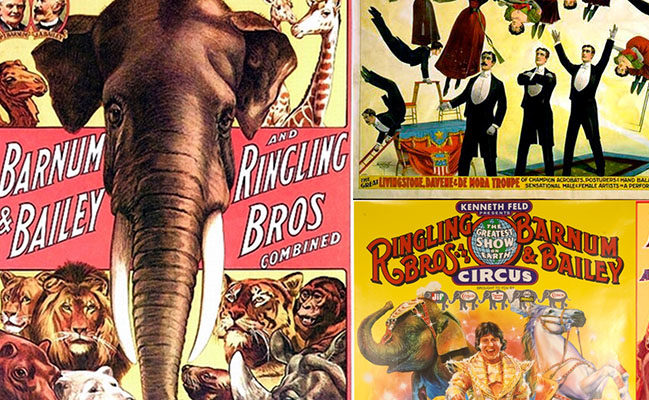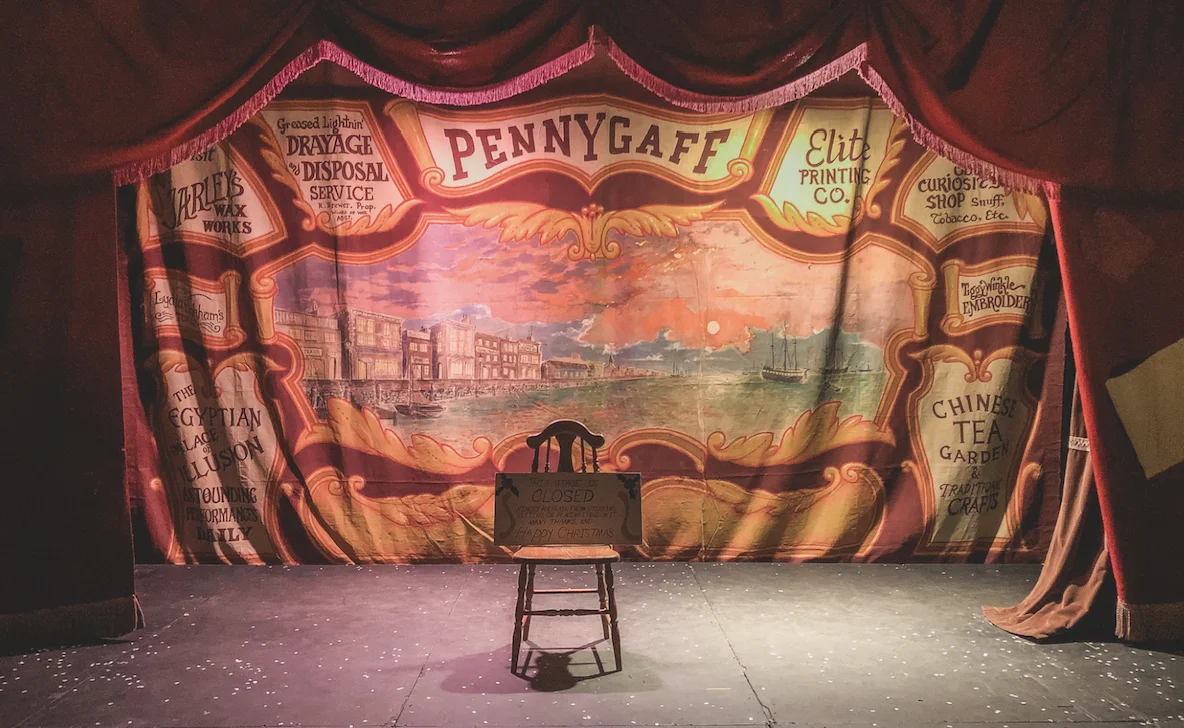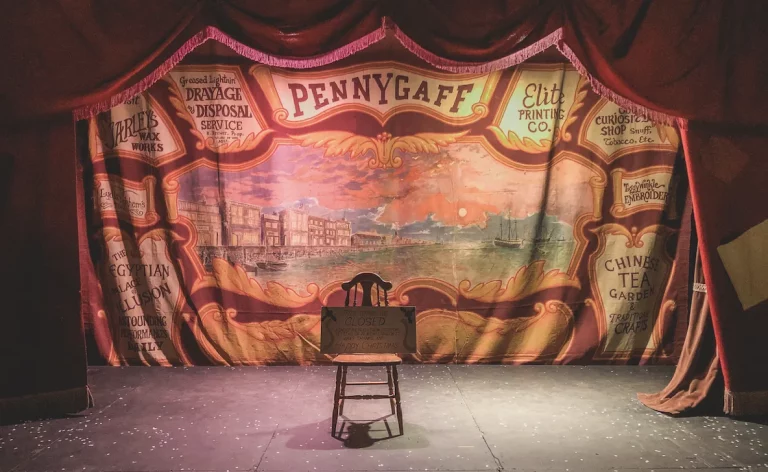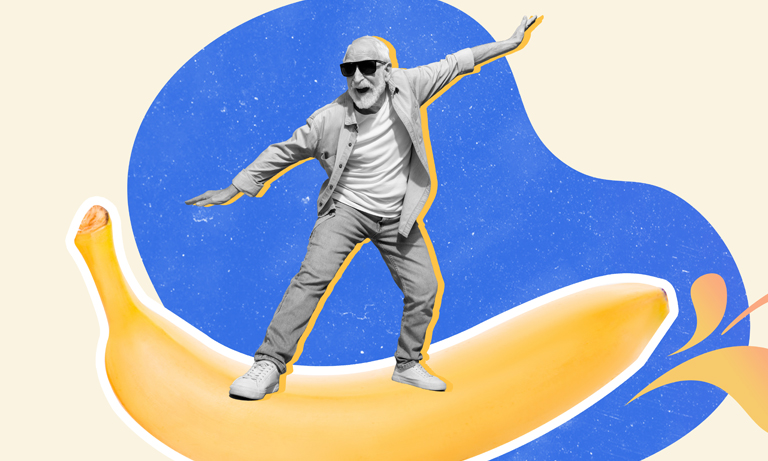Circuses are the tofu of branding and advertising. It takes on the personality of whatever you marinate it in. So iconic, yet so flexible. It is little surprise that everyone from Britney Spears to Rob Zombie have co-opted the circus theme to hawk their own brand of showmanship, from wholesome pop to fearsome goth rock. And I love them all.

As a proud Gen X-er, I’ve been fortunate enough to experience the circus in the most classic sense of the word. We’re talking Ringling Bros-style extravaganzas. While parents got down with their disco rump-shaking and Bacardi-swigging antics back in the days, we 70s kids had mustachioed ringmasters, phenomenal fire eaters, high-wire trapeze artists, larger-than-life exotic animals, pranking clowns, hot roasted peanuts, candied popcorn and soda (or more likely, artificial bird’s nest drinks)…all under 1 colourful big top at the neighbourhood fairground.
To an impressionable child growing up in the 70s, the circus was the most enthralling, fantastical experience you could ask for. It was our disco and drug of choice. The circus was where we got hypnotised by people in crazy, skimpy get-ups; entranced by frenzied parcan lights that searched the audience and showcased headlining acts; got our minds blown by feats of human derring-do; and be transported to a different dimension. It was an explosion of music and lights and imagination, a chance for us ordinary people to crawl out of our daily lives and enjoy extraordinary spectacles and illusions that made our jaws drop. The circus appealed to our sense of wonder, amusement, and showed us a bigger world than the one we knew. It was an event.
For better or worse, animal rights activism and shifting standards in entertainment over the years (thank you Playstation, thank you cable TV!) have contributed to the demise of the old-school, Ringling Bros-styled circuses. Seeing elephants stacked atop each other like dominoes is no longer wondrous but a tortured sight of animal abuse; seeing an animal wrangler stick his head into the mighty jaws of a ferocious Bengal tiger no longer provoke gasps of admiration but screams of horror; and the sight of monkeys pedalling a bike no longer induce giggles but snarly comments like, “Don’t they have better things to do…like type?”. I kid. But you get the idea.
The closest thing we get to the modern circus are Cirque du Soleil spectacles that dispense with animal acts but focus squarely on human acrobatics with a multi-million-dollar storyline and carefully choreographed light shows. Circuses today no longer resemble a carnival, but a high-art cultural performance unfolding under the comforts of an air-conditioned tent and overpriced Chardonnays.
At the risk of offending Cirque fans (and they are legion), the art of circus branding has, to me, lost its shine. Ironic, considering their ads are extremely polished feats of digital imaging and art direction. The advertising for circus extravaganzas in the past were resplendent works of showmanship. Illustrated works of art with big, bold and confident typographies that evoked a carnival-esque sense of wonder and appealed to our sense of adventure and fun; inescapable splashes of bright orange, yellow and red that made your lungs burst with excitement; and improbable headlining acts (human and animal) with over-the-top headlines that made you want to believe. They had pizzazz!
The designs of Cirque ads today, in contrast, brand the experience as sensual, mystical, alchemistic. They are beautiful, for sure, but are also tinged with a slightly dark, overwhelmingly surreal sensibility. Do they work? Well, the artwork is beautiful, and the brand works. There’s creativity in full glorious display here. But seldom do they make my heart pound, or work as effectively as a prelude, to the main event that’s about to come. Their branding and ads are representational to a theme and not for a mood. They appeal to the minds, rather than baser instincts like wonderment and fun. Or perhaps what I need is a swig of chardonnay and a hit of Rick James to appreciate the nuances.
Which is why I’m grateful for Chinese New Year. Chinese New year celebrations are often loud, brash, convivial and colourful affairs that are not set up to appeal to the rational mind but to the emotions and heart. The icons of Chinese New Year festivities feature very much the same elements as circuses of yore: Bold, confident lettering; an unapologetic overdose of reds and yellows; pun-ny in-your-face copy and overclaims; and music cues that instantly conjure a carnival-esque mood that can be both anticipatory and numbingly grating. When CNY rolls into town, the country is transformed into a carnival, an explosion of sights, sounds, smells and colours; resplendent with candies, peanuts and sodas; where kids continue to be tickled (or terrorised) by strange people they have never seen before in gaudy get-ups. It’s the closest thing we have today to the 70s circus, and I don’t mean that in a bad way.
Today, in many countries outside Europe and China (where circuses are preserved for their artistic and cultural merits), the old school circuses have become something of an antiquated guilty pleasure…as is (I’m sure to many adults in Singapore) Chinese New Year. I mean, look at it, it has all the ingredients! And so I speak for many at antics@play, we love the lost art of circus branding, and can therefore think of no better opportunity than CNY, to bring that particular brand of gaudy back. Circus branding can survive just about anything…perhaps just not Cirque du Soleil.






